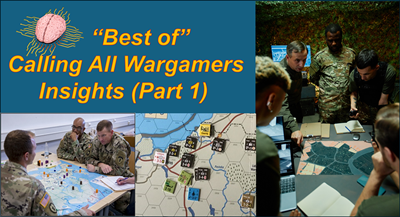[Editor’s Note: This past spring, Army Mad Scientist sought to crowdsource the intellect of the Nation (i.e., you — our community of action!) with our Calling all Wargamers flyer, soliciting input about your wargaming experiences:
-
-
- What are you learning about Large-Scale Combat Operations (LSCO)?
-
-
-
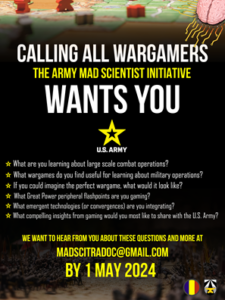 What wargames do you find useful for learning about military operations?
What wargames do you find useful for learning about military operations?
-
-
-
- If you could imagine the perfect wargame, what would it look like?
-
-
-
- What Great Power peripheral flashpoints are you gaming?
-
-
-
- What emergent technologies (or convergences) are you integrating into your wargaming?
-
-
-
- What compelling insights from gaming would you most like to share with the U.S. Army?
-
We were overwhelmed with the number of responses we received and are featuring some of what we have learned here in the run up to our Game On! Wargaming & The Operational Environment Conference, co-hosted with the Georgetown University Wargaming Society, on 6-7 November 2024 — additional information on this event and the link to our registration site may be found at the end of this post.
Today’s post captures the initial tranche of the “Best of” insights we received — we’ll be featuring a “Best of” (Part 2) with more of your brilliant insights, along with additional interviews with some of the contributors in the weeks ahead. In the meantime — read on!]
What are you learning about large scale combat operations?
1. LSCO are very complex. There is the need to synchronize the efforts of multiple formations in different Theatre of Operations, simultaneously operating across all domains. Those formations are often multinational, down to the lower echelons, which increases the level of difficulty for coordinating Operational and Tactical Activities. Possible issues include:
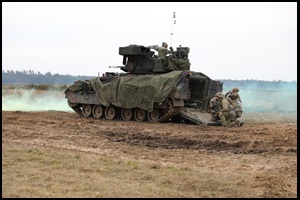
Standardization of the materiel and non-materiel component of the available Combat Power (especially C4 and Doctrine);
Different political constraints and restraints regarding the use of Force; and
Freedom of movement across the Theatre of Operation (there could be limitations to the full exploitation of the local transport infrastructures).
In my opinion, wargaming (analog or digital) is one of the best tools to analyze these kinds of problems. All countries can hardly afford to deploy large formations (many Armies or Corps supported by air and naval fleets) in multiple areas of operation during live exercises for many months. Preparing Commanders and Staffs (especially at Division-level and above) to face the mentioned LSCO challenges is certainly difficult but essential. – COL Gianmarco Di Leo at Joint Staff (JS) J7 (Italy)
2. I’m learning two things: 1) the importance of cadence — pacing combat operations and priorities with supply constraints and human capabilities. Supply has always been important, critical even, but until you experience it in a wargaming (or a real) scenario, that intellectual awareness doesn’t become visceral. Supply, resupply, and dispositioning of reserves are key. 2) Integration of new technologies, especially cyber and drones, into decision-making. Both can have significant impacts on in-theater performance. – Robert Walton at Kinetic Strike Intelligence, LLC
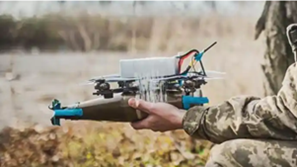
3. Mass matters. We need wargames/simulations to account for mass. From what is happening in Ukraine, this means mass in the traditional sense, with a large volume of people mass (i.e., armies), and in the technological sense with things like Unmanned Aerial Systems (UAS). What do attacks with thousands, if not millions of one-way attack drones look like? They are starting to change battlefield dynamics in a massive way. – Arnel David, MPhil/PhD Candidate at King’s College, London, KCL Wargaming Network
4. I’m unconvinced that we systematically review wargames in the light of subsequent experience. In the wake of the failure of the Ukraine spring 2023 offensive, how many post-mortems have been done on the wargames that informed NATO advice? (Publicly, at least, some Ukrainian officials have complained the wargames were not helpful) – Prof. Rex Brynen, McGill University
What wargames do you find useful for learning about military operations?
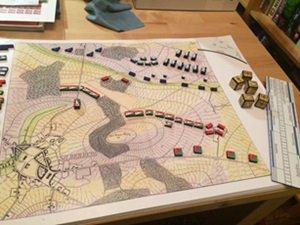
1. One of the most valuable wargames to play is the original Kriegsspiel as originally designed. The learning that occurs regarding command and control and mission command is unmatched. Participant’s FEEL mission command, that is how to provide guidance in a succinct manner, while attempting to develop a shared understanding. It’s really hard, especially when communication is realistically represented and constrained. Any organization (civilian or military) can learn a lot about intent, initiative, trust, and succinct communication from a 3-4 hour session of Kriegsspiel. A bonus: no knowledge or understanding of 19th Century warfare is required to enhance the learning of the organization and individuals participating in the game. The real value is about communication, trust, and making decisions in ambiguous and uncertain environment. [Editor’s Note: The original Kriegsspiel is celebrating its 200th anniversary this year!]
Answering the question from a different perspective, I found non-military games to be just as effective for achieving the learning outcomes related to warfighting. For instance, I used Settlers of Catan to teach a strategic thinking lesson in an Army school. The students were always able to apply the learning to all levels of warfare. Core take-aways included: target fixation (where they focused on a singular objective at the expense of other activities, even when it resulted in failure); inability to stay focused on the ultimate objectives (i.e., reacted to every stimuli instead of first considering if a reaction or change is required); thinking in time (fighting in the moment, versus considering what the future state may be); etc. Moreover, non-military games offer additional advantages. For instance, there is generally a smaller learning curve. Second, a non-military game provides a “safe space” for military members to exercise their decision-making without judgement of their tactical/operational acumen. Performance anxiety and reputational risk is a thing. Unfortunately, others may judge the wargame results out of context. No one wants to lose, but no one wants to see their “3” or future commander lose during wargames. Commercial non-military wargames provide a legitimate “out,” so participants can focus on their decision making and self-growth. – Steve Sallot, Wargame Designer / Operations Research Analyst, Strategic Wargaming Division, Center for Army Analysis
2. I find Combat Mission extremely valuable for company grade officers to test their plans and skills in maneuver. For the operational level, I’ve been participating in tournaments with the U.S. Marine Corps Fight Club using WarPlan by Matrix Games. It is focused on World War II but is an elegantly designed game that forces players to think about maneuver and logistics at the operational level. For Multi-Domain Operations (MDO), I find Command to be the best simulation for testing how MDO capabilities can be employed against adversarial systems. It is a powerful physics-based simulation that allows you to do a Monte Carlo analysis, running the simulation a thousand times to illuminate variance and anomalies. – Arnel David
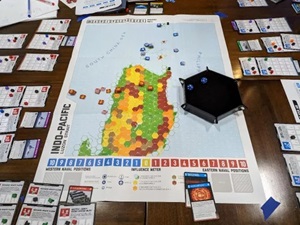
3. I prefer operational games that abstract tactical elements and force decision-making at the division level or above. I love games which are elegantly designed, without clunky mechanics, and focus your energies as the player on the actual decision level of the commander intended. I don’t enjoy games which force a general to make decisions better left to a captain. Unfortunately, many games do this since they want to be “crunchy” and if the player doesn’t resolve the lower-level issues, the game (unless a computer game) does not. This is why abstraction is key. And also why I like computer games a lot. One table-top design I really like is Littoral Commander: Indo-Pacific. It’s at the top edge of “crunchiness” one can achieve without forcing the player too deep into details below their command level. – Robert Walton
4. Considering my most recent wargaming experiences and studies, I would suggest:
Operational Wargaming System, developed by the Marines Corps University;
Littoral Commander: Indo-Pacific and The Baltic, developed by Sebastian Bae;
Next War series, developed by GMT.
Main advantages are:
Game mechanics, with different levels of complexity and flexibility, which allow a good simulation of LSCO challenges;
Games commercially available at a reasonable price (low cost);
Games based on Open Source, reasonably accurate, Intelligence (easy to play with multinational players of all possible Allied and Partners’ Nations without classification problems);
VASSAL modules for the games are already available (possibility to remotely play from different locations without the need to gather people in the same place).
I would also suggest the most extensive use of Tactical Decision Games (not only for junior leaders, but also for senior commanders, assisted by their key staff elements). They are easy to set up, can easily involve large audiences and are usually less time consuming (no rulebooks to study). – COL Gianmarco Di Leo
If you could imagine the perfect wargame, what would it look like?
1. There is no such thing as a perfect wargame. Every wargame makes abstractions and compromises. The Joint Force needs an ecosystem of wargames ranging from small micro-games that can be played in 20 minutes to larger games like the Operational Wargame System (OWS). Also, this will allow an ecosystem of games to explore a wider range of topics that impact LSCO — such as civilian harm, Maritime Domain Awareness (MDA) framework, logistics, unmanned systems, etc. — Sebastian Bae, Assistant Adjunct Professor, Center for Security Studies, Georgetown University [Editor’s Note: Next week’s episode of The Convergence Podcast and the Mad Scientist Laboratory blog post will feature our interview and highlights from our conversation with Sebastian Bae — exploring how wargaming can help better prepare our Leaders for a complex Operational Environment.]
2. I don’t believe there is a single wargame that can solve all of our problems. I think we need to use a mixed-method approach to gaming and simulations. We need to design wargame events that weave in multiple platforms, tools, and simulations for a comprehensive experience. It should be multimedia and immersive. A couple of years ago, we tried to explain this idea with a short 4-min video (see: https://youtu.be/SXZ5co4NsI4?si=JqDl0MmJbxhH873n) – Arnel David

3. My perfect wargame would be a hybrid wargame (a combination of tabletop and digital). The tabletop portion would be used to simulate the operational/strategic level of conflict and allow the planning of operations. All tactical resolution would be completed using a variety of digital games appropriate for the level of engagement being simulated. Units represented on the map by counters would encounter one another and this engagement would be transposed and resolved using a digital wargame. The point of making a hybrid game like this is that it allows for multiple levels of training at the tactical level using digital games and at the operational/strategic level using a tabletop system. Both digital and tabletop games have their advantages and neatly cover each other’s weaknesses. — William Burnett-Boothroyd, Commercial Officer, Slitherine Software & Matrix Pro Sims
4. I don’t believe it is really possible to build a “perfect” wargame that can simulate a LSCO. All wargames need to be specifically adapted to the selected objectives (e.g., educational or operational) and the training audience (e.g., commanders or staffs). Anyway, I would suggest building a wargame that mixes the typical aspects of multi-echelon all domains large scale operations (strategic, operational, and tactical) with the ones of Tactical Decision Games, in order to increase the immersion of the players in specific roles and to highlight the difficulties of Command, as well as of human interaction. The wargame should also be supported by digital tools (such as VASSAL or Table Top Simulator) that may simplify the setup of the activity and facilitate remote gaming. – COL Gianmarco Di Leo
5. I find that most popular wargames do a crappy job of showing Air Tasking Order (ATO) cycles, echeloning fires, and timing tempo with massing fires. Granted that for the majority of the audience, it’s a wargame, not a simulation. I adapted Flames of War and Team Yankee in conventions to force the players to place “chits” on a labeled sheet that replicated a fires sync matrix to show which turns (that represent phases in an operation) they wanted to fire planned targets. I also introduced Controlled Supply Rate (CSR) and Required Supply Rate (RSR), limiting the amount of artillery ammunition they had to force players to allocate and prioritize fires. – Alexander Grinberg
What Great Power peripheral flashpoints are you gaming?
1. We (NATO) are starting to look at wargaming the information space in the Balkans as well as counter-terrorism operations in the region. We are trying to take a more holistic approach by integrating transnational criminal organizations and terrorist groups that conduct activity below a threshold that most nations would notice. – Arnel David
2. I am gaming Next War: Vietnam with PRC and Vietnam; also gaming Next War: Taiwan with the U.S. and Japan involved beside the primary combatants — Donald Levick
3. South China Sea; Africa; the Baltics, including the new NATO Nordic Nations; the high north; grey zone competition which escalates into large scale conflict; maritime competition in the island nations of Asia. — William Burnett-Boothroyd
 4. The Team recently executed the RED DRAGON 2044 China Strategic Competition Game to discover NATO’s shortfalls or advantages against a more globally assertive China in 2044 in order to inform the development of Military-Strategic Shaping Operations for NATO. In support of NATO Headquarters’ High Level Exercise Program, in October 2023 the Team executed the Seabed to Space Strategic Lines of Communication Table Top Exercise (TTX) for the Permanent Representatives (PERMREPs or “Ambassadors”) of NATO’s North Atlantic Council. The TTX was designed to raise awareness of the implications to the Alliance regarding the intentional disruption of space assets and critical
4. The Team recently executed the RED DRAGON 2044 China Strategic Competition Game to discover NATO’s shortfalls or advantages against a more globally assertive China in 2044 in order to inform the development of Military-Strategic Shaping Operations for NATO. In support of NATO Headquarters’ High Level Exercise Program, in October 2023 the Team executed the Seabed to Space Strategic Lines of Communication Table Top Exercise (TTX) for the Permanent Representatives (PERMREPs or “Ambassadors”) of NATO’s North Atlantic Council. The TTX was designed to raise awareness of the implications to the Alliance regarding the intentional disruption of space assets and critical 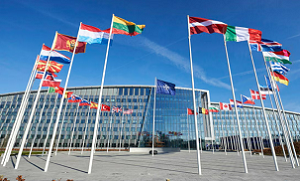 undersea infrastructure, along with a variety of hostile cyber domain activities. The game helped improve the PERMREPs’ understanding of the possible impacts and cascading effects of such disruptions on NATO activities. — LTC(P) Aaron Beam and Richard Goldblatt, NATO Allied Command Transformation (ACT) Experimentation and Wargaming Branch (EWB)
undersea infrastructure, along with a variety of hostile cyber domain activities. The game helped improve the PERMREPs’ understanding of the possible impacts and cascading effects of such disruptions on NATO activities. — LTC(P) Aaron Beam and Richard Goldblatt, NATO Allied Command Transformation (ACT) Experimentation and Wargaming Branch (EWB)
5. I would suggest to dedicate more attention to wargames simulating the competition in Africa and Middle East, as well as a possible confrontation in space (Earth Orbit and Moon). In the near future, different coalitions (not necessarily friendly) could increase the development of orbital stations and satellite constellations. Permanent bases could also be built on the Moon. I believe it would be useful to exploit wargames to understand, analyze, and simulate possible large scale military operations in space and on the Moon. – COL Gianmarco Di Leo
What emergent technologies or convergences are you integrating?
1. There are lots of technologies that have promising applications in wargaming. The issue is finding a purpose for them that can be used on government systems. The cloud and virtual computing have the most promise in increasing accessibility of wargaming. This is being shown in the Marine Corps University’s Wargaming Cloud. Augmented Reality (AR) and Virtual Reality (VR) technology is being experimented with to enhance map-based  wargaming, but has issues in classified gaming. AI applications have been most hyped, but its current form of Large Language Models (LLMs) should be specifically trained for wargaming purposes, and LLMs are not universal, one size fits all solutions. – Sebastian Bae
wargaming, but has issues in classified gaming. AI applications have been most hyped, but its current form of Large Language Models (LLMs) should be specifically trained for wargaming purposes, and LLMs are not universal, one size fits all solutions. – Sebastian Bae
2. We have been thinking a lot about cognitive warfare (maneuver). We have been using “metaverse”-type simulation environments to wargame new concepts for how we improve influence operations. – Arnel David
3. In general, most technological advances are changes in effectiveness, higher probability to hit, more evasive, increased survivability, or greater chance to inflict more damage. We are exploring more complex aspects of information warfare and decision dominance. Specifically, we are exploring command and control warfare, and experimenting with different defeat mechanisms such as entropy and adaptation failure, vice just attrition. In general, we have successfully integrated space and cyber effects into wargames. To the dissatisfaction of the functional experiments, the integration focuses on the effects, the “what,” not the “how.” This is usually a conscious decision to facilitate game play—siding with playability over realism. On the flipside, participants generally appreciate the ability to integrate and prioritize effects normally reserved for an artificial inject such as a white card or manual override. – Steve Sallot
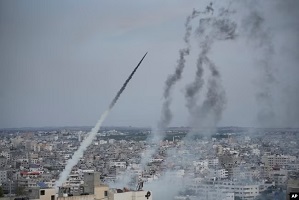
4. While a focus on emerging technologies and capabilities is essential, it’s important in doing so not to undervalue well-established techniques and approaches. Hamas achieved historic strategic surprise on October 7, 2023 largely by using planning, OPSEC, and deception procedures that would have been familiar to military planners one hundred years ago. Similarly, while urban fighting in (say) Mosul, Bakhmut, or Gaza has been affected by technological change, much of it would have also been familiar to a veteran of Stalingrad. The really critical issue is the integration of old and new. — Prof. Rex Brynen
5. Unmanned Systems (remotely piloted, semi-autonomous and autonomous) and cyber capabilities. It would be interesting to integrate possible near future LSCO developments in the fields of Genetics (e.g., genetically improved soldiers or cloning), Robotics (advanced autonomous unmanned systems), AI (supporting all elements of combat), and Nanotechnology (supporting all elements of combat) – COL Gianmarco Di Leo
What compelling insights from gaming would you most like to share with the US Army?
1. Leaders, especially officers, need to war game more. In addition, we have to allow ourselves to lose in wargames because defeat forces us to realize that we are not unbeatable. I play the Russians in Decisive Action, and with Russian tactics and inferior Russian weapons, I beat my students consistently who have the best and most modern U.S. Army systems. I’ve learned that defeat is a far better teacher than victory. Victory breeds complacency. When the students lose the first game in Decisive Action, their performance is markedly improved during the second game. – Leo Barron, U.S. Army Intelligence Center of Excellence Instructor (runs a daily wargame club at lunch)
2. Wargaming should be agnostic of rank and position. Everyone should be doing it. Wargaming does not provide ‘answers’ — it’s a cerebral exercise to prepare people to make good decisions under pressure. Wargaming should be run in an environment in which all voices are heard. At Modern Day Marine 2024, the USMC’s MCTOG team won against teams mostly composed of officers from Captain to Lieutenant Colonel – they were all enlisted marines. – William Burnett-Boothroyd
3. It’s a fantastic and super cost-effective way for players to develop time-space analysis, three-dimensional thinking, and planning. Then again, the Army has been attempting to teach Kriegsspiel through warfighters and whatnot 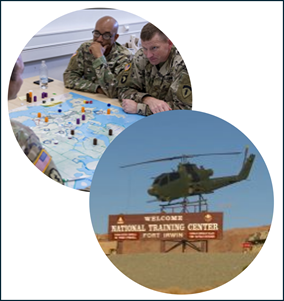 for decades. I would be interested to see a study done that compares planners who are avid wargamers with those who are not. I’m willing to bet that wargamers have probably thought through many of the common problems people see at Combat Training Centers that non-wargamers encounter [“in the box”] for the first time. Wargaming is Army training and units should encourage Soldiers/Leaders to wargame. – Alexander Grinberg
for decades. I would be interested to see a study done that compares planners who are avid wargamers with those who are not. I’m willing to bet that wargamers have probably thought through many of the common problems people see at Combat Training Centers that non-wargamers encounter [“in the box”] for the first time. Wargaming is Army training and units should encourage Soldiers/Leaders to wargame. – Alexander Grinberg
4. My definition of “gaming” is the modern video game industry. The U.S. Army or the DoD for that matter, has not leveraged modern gaming technologies, lessons learned, and more. The U.S. military seems to be stuck in the tabletop gaming era and retired O-6’s are the game designers because that’s just the way it has to be. The equivalent of wargaming doctrine starts and ends with Peter Perla’s book from the 1990’s. The civilian industry supporting wargames likes to debate on semantics about wargames utility (education, analysis, etc.). Meanwhile, China is hosting national wargaming tournaments for recruiting and generating new ideas.
Make wargames more fun. For the wargames I’ve attended, they usually are not fun. You stand/sit around for 8 hours per day, for multiple days, in front of a tabletop set up. I’m not saying we all need to sit in front of PCs and make it seem like we’re playing Call of Duty, but there’s a middle ground – more interactive, maybe even highlight clips of what was achieved during a “good move” or a summary recap (but visual). More fun = more engagement, which helps with learning. – Jonathan Pan, Visiting Fellow at Stanford’s Hoover Institute, Wargaming and Crisis Simulation Initiative
5. I think the time is now to use crowdsourced gaming to feed into AI applications. For example, I strongly believe we need a recommendation engine algorithm that could sort gaming outputs (e.g., reports, videos) for improved knowledge discovery and enhanced learning. These could eventually feed a virtual assistant to aid warfighters.
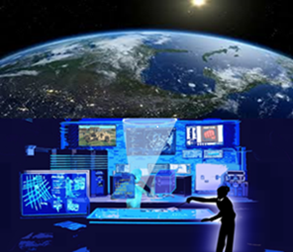 Imagine millions of gamers worldwide battling it out in a hyper-realistic military simulation. Every decision, every tactic used, feeds into a vast AI learning machine. This crowdsourced gaming wouldn’t just be fun and entertaining — it would train AI to predict enemy (human) behavior, optimize troop movements, and develop winning strategies in future real-world conflicts. By harnessing the collective power of gamers, we could revolutionize warfare, save our warfighters’ lives, and maximize efficiency in a way traditional wargames simply can’t.
Imagine millions of gamers worldwide battling it out in a hyper-realistic military simulation. Every decision, every tactic used, feeds into a vast AI learning machine. This crowdsourced gaming wouldn’t just be fun and entertaining — it would train AI to predict enemy (human) behavior, optimize troop movements, and develop winning strategies in future real-world conflicts. By harnessing the collective power of gamers, we could revolutionize warfare, save our warfighters’ lives, and maximize efficiency in a way traditional wargames simply can’t.
A new era of gaming promises to disrupt the outdated and rigid military planning that fails to prepare us for the rapid pace of modern battlefields. To cultivate the mental agility our leaders desperately need, we must turn to repetitive, competitive gaming. This approach expands our leaders’ experience base far beyond traditional methods, forcing them to think critically, adapt strategies instantly, and develop the decisive edge necessary to out-think, out-maneuver, and, when necessary, out-fight our adversaries. – Arnel David
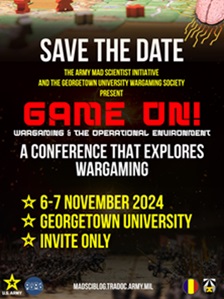
We hope this post has piqued your interest regarding how wargaming can inform us about the Operational Environment and support Professional Military Education. Army Mad Scientist and the Georgetown University Wargaming Society want to invite you to learn more about this topic at our Game On! Wargaming & The Operational Environment Conference.
What: An in-person conference to explore Wargaming and how it can help the Army better understand the Operational Environment
When: 6-7 November 2024
Where: The Healey Family Student Center, Georgetown University, 3700 Tondorf Road, Washington, DC 20057
Why: To explore new wargaming methods, new ways to incorporate learning into Professional Military Education, and have an open dialogue with wargamers inside and outside the military.
***In order to attend, you must register through Eventbrite — click here now to reserve your seat — access will be limited to registered attendees only!***
Stay tuned to the Mad Scientist Laboratory for conference updates and forward any questions you may have to madscitradoc@gmail.com
In the meantime, check out the following Mad Scientist Laboratory wargaming related content:
Civilian Harm Mitigation and Response (CHMR) Considerations in Wargaming LSCO, Achieving Victory & Ensuring Civilian Safety in Conflict Zones, and associated podcast with Andrew Olson
Brian Train on Wargaming Irregular and Urban Combat
Live from D.C., it’s Fight Night (Parts One and Two) and associated podcasts (Parts One and Two)
Would You Like to Play a Game? Wargaming as a Learning Experience and Key Assumptions Check and “No Option is Excluded” — Using Wargaming to Envision a Chinese Assault on Taiwan, by Ian Sullivan
Using Wargames to Reconceptualize Military Power, by proclaimed Mad Scientist Caroline Duckworth
Gaming the System: How Wargames Shape our Future and associated podcast, with guest panelists Ian Sullivan, Mitchell Land, LTC Peter Soendergaard, Jennifer McArdle, Becca Wasser, Dr. Stacie Pettyjohn, Sebastian Bae, Dan Mahoney, and Jeff Hodges
The Storm After the Flood virtual wargame scenario, video, notes, and Lessons Learned presentation and video, presented by proclaimed Mad Scientists Dr. Gary Ackerman and Doug Clifford, The Center for Advanced Red Teaming, University at Albany, SUNY
Gamers Building the Future Force and associated podcast
Disclaimer: The views expressed in this blog post do not necessarily reflect those of the U.S. Department of Defense, Department of the Army, Army Futures Command (AFC), or Training and Doctrine Command (TRADOC).

